Best of 2022: Round 2

As we do at the very beginning of every year, this week we’re offering you an assemblage of favorite questions and responses from the previous year’s fifty-plus interviews between reviewers and authors. Please give this an attentive read—we know you’ll find a few nuggets of wisdom to help make 2023 a year of great gains and growth.
Reviewer Kristine Morris Interviews Fides Krucker, Author of Reclaiming Calliope: Freeing the Female Voice through Undomesticated Singing
In your teaching, what do you find is the most common form of resistance to producing a full range of natural sounds? How do you help your students overcome this resistance?
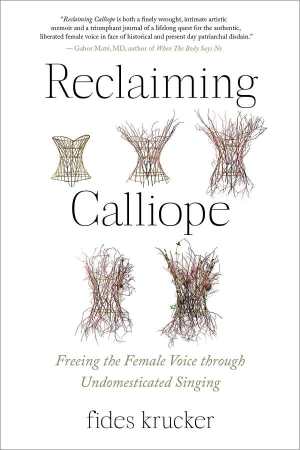
I don’t think we trust non-verbal vocalization. It makes us appear too “animal.” Such sounds reveal what and who we are ‘in the moment’ without any social veneer—they betray the secret of how we feel.
We have a hard time imagining that non-verbal sounds become singing—we think singing is extended speech. But I think music is pre-speech—the flutter of a shudder turning into series of cascading notes; the ache of a wail becoming the arcing melody of a song; the gravel of my low F indicating my moan and how that is the point of departure for a story of desire, and maybe even resilience.
When we embrace the undefended belly and pelvic floor, and the opening of ribs, throat, and mouth, these sounds emerge naturally. A ten-minute yawn session is a great way to let the body lead into the self-expressive nature of vocal cords and resonance. The body is an excellent teacher when it comes to “sound based in feeling,” so we yawn, sigh, moan, laugh, and explore all our resonances with impunity—in front of one another around the piano. And then we organize the bottom and the top of those sounds into a full tube of easy-on-the-vocal-cords vibration.
Reviewer Kristine Morris Interviews Kristin Ohlson, Author of Sweet in Tooth and Claw: Stories of Generosity and Cooperation in Nature
You quote author and editor Brian Doyle as having said, “The whole point of our evolution, it seems to me, is for us to find a way to fit back into the world as it really is, rather than try to remake the world to fit us.” What might daily life look like for a twenty-first century person, community, or nation choosing to “fit back into the world as it really is?” What would have to be given up? What would be gained?
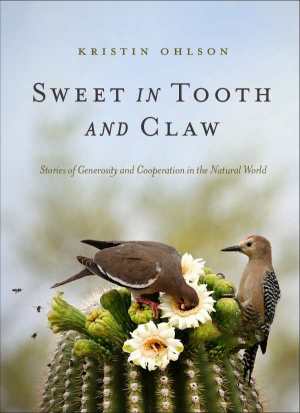
That quote reminds me of one of my favorite stories in the book—that of the two cyanobacteria that live side by side in floating communities in the seas. Both feed themselves by photosynthesis, but as they do it they also create a toxic byproduct and need to protect themselves against it squirting an enzyme into the water. It’s a lot of work to make that enzyme, and at one point in time, both types of cyanobacteria had the genetics do to it. But it turned out to be better for the two of them if just one made enough of the protective enzyme for both of them and the other used all their energy to grow. That second cyanobacteria is called Prochlorococcus—and it makes enough of itself to feed thousands of sea creatures and create five percent of the earth’s oxygen.
I think that one way we need to fit back into the world as it is to do less of some of the things we know how to do very well. We know how to make dozens of kinds of toothpaste. We know how to launch big ad campaigns to sell millions of units of Beanie Babies, or whatever the latest toy is. We know how to use some of the oil we extract from the ground to make plastic green mats that look like grass and that some people are now using instead of lawns. But I think we need to let go of some of those skills, or at least, turn them in drastically different directions. We are such a creative and energetic species that we can solve most, if not all, of the problems we’ve created on this beautiful planet. A first step would be curbing consumption, recognizing every single product represents resources mined from the rest of nature and energy expended to process them. We would of course have less stuff—and the storage unit businesses might have to do something else with the space that they have dedicated to our excess—but we would have greater peace of mind.
Reviewer Rebecca Foster Interviews Thom van Dooren, Author of A World in a Shell: Snail Stories for a Time of Extinctions
You write about the Hawaiian concept of “pono”—of everything being right. For someone who takes extinction as a recurring subject, it must be hard to find instances of things going right in the natural world. Where do you find hope these days?
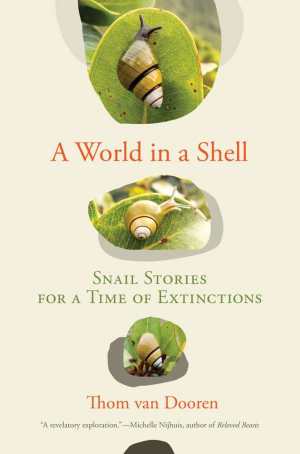
I should start by saying that I don’t have any bold, utopic hopes when it comes to the future of Hawai’i’s snails or to so many other facets of our current environmental predicament. My hopes are saturated with ambivalence, and even mourning. They’re still hopes, though. I’m still deeply committed to working towards particular kinds of futures that are much better than what might otherwise come to pass. But they’re not hopes for a world “set to rights.” I think if we make more room for these kinds of hopes, we can find them everywhere, in all sorts of mundane, everyday labours and practices. These are the kinds of hopes I try to document and celebrate in the book. While on some level they might seem small, they often shelter all sorts of good things within themselves. And they also come together in unexpected and surprising ways, sometimes to achieve things that we would never have imagined. So, rather than being small, I prefer to think of these kinds of hopes as simply being overlooked, something that they have in common with snails.
Reviewer Meg Nola Interviews Clark Strand, Author of Waking Up to the Dark: The Black Madonna’s Gospel for an Age of Extinction and Collapse
In Waking Up to the Dark, you describe the “daylight realm” of ambitions, goals, and actions. And then there’s night, which should be a time of dreams and replenishment, yet it’s often troubled by insomnia, worry, and even fear. During the night, what’s the difference between “The Hour of the Wolf” and “The Hour of God”?
An NIH study conducted by psychobiologist Thomas Wehr in the 1990s found that ordinary people, taken off artificial lighting for one month, all reverted to a primordial pattern of sleep. They would begin to grow quiet not long after sunset, turning in for the night about two hours later. After four hours of sleep, they would wake for two hours, following which they fell asleep again for another four. That discovery was impressive enough. But the biggest takeaway was what happened in the interval between those two periods of sleep.
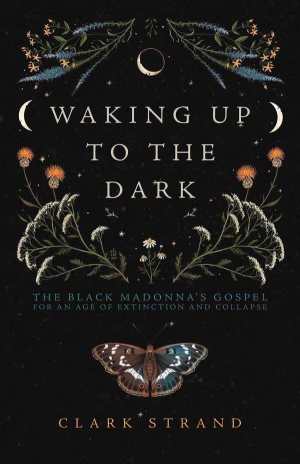
Wehr’s subjects experienced a profound peace during that gap. But they weren’t exactly awake for it—or at least not as we ordinarily understand that word. The hormone prolactin, which keeps our bodies still while we are at rest, remained at sleep levels during those two hours. When I first read this, I couldn’t help but think of a line from the Song of Songs: “I sleep, but my heart is awake.” It was a state of consciousness not familiar to modern sleepers, Wehr concluded—one with an endocrinology all its own. The closest thing he could compare it to was the state reached by mystics in the depths of meditation.
This was the mode of sleep observed by Homo sapiens from the Paleolithic through the early modern age. It only changed with the dawn of the Industrial Revolution. Assisted by increasingly brighter forms of artificial illumination, eventually we compressed our sleep nights, like our workdays, into convenient eight-hour blocks. That was when The Hour of God became The Hour of the Wolf.
People still wake in the middle of the night, because it’s impossible to fully suppress that older pattern of sleep. But now they experience it as insomnia. Their prolactin levels fall soon after they wake, especially if they check their phones or turn on the lights, and soon they are restlessly tossing and turning. If they can’t get back to sleep after that, the Hour of the Wolf arrives, so-called because of the eerie, predatory fatalism that tends to come calling on modern people in the small hours of the night.
It’s the perfect metaphor, really. The wolf represents an older, wilder way of being that the modern world sought to eradicate. But that older way can’t be driven to extinction. It’s still there inside of us. Our way of life has changed radically with the invention of modern lighting. Our biology had remained the same.
Reviewer Erika Karlitz-Kern Interviews Heather Camlot, Author of The Prisoner and the Writer
Is there anything in particular that you would want your readers, especially the children who read this book, to take with them after they finish reading the story?
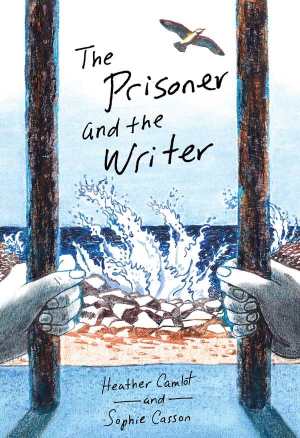
I would love children to look around their world and if they see injustice, to stand up and speak out, to try to make a difference in their lives and the lives of others. I know that can be really hard and takes a lot of courage. Here’s another ask: I would like readers to understand that the information they hear, see, and read in the media may be biased or even completely fake. Just like during the Dreyfus affair, certain news sources may intentionally mislead, and the best defense for children and adults alike is to ask questions and check out multiple reports to make up their own minds.
Reviewer Jeana Jorgensen Interviews Jackie Morris, Author of The Wild Swans
Folklore scholars debate whether silence in fairy tales is a curse or a blessing or a protest against patriarchal norms. While Eliza is silent, she is also gifted with the secrets from the hearts of the townspeople, but some of those secrets prove to be heavy burdens. Where do you ultimately stand on the issue of silence … does it help us, harm us, or perhaps a little bit of both?
For me writing is what George Mackay Brown called “the interrogation of silence.” Such a difficult thing to find, true silence. I live in a quiet place, where it is possible to hear the voices of birds, the wings of small creatures and on still nights the wings of bats. The world is full with noise and it does not play kindly to our mental health.
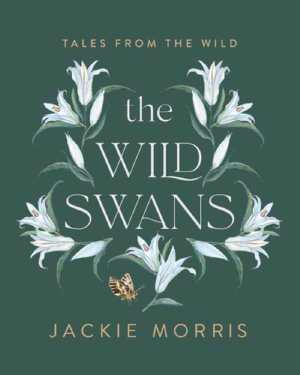
To seek silence as a choice is a good thing, I think. It allows time for thought, reflection. To fill all your day with the constant chatter of radio and television is soul destroying. Conversations with books can be had in silence.
Each of us has a voice and each person has the right to be heard, but so much of this is drowned out in celebrity, news, and game playing chatter. I would listen to the stories of migrant peoples, those whose own stories are far more powerful than the empty husks of politicians who would seek to silence them. The other kind of silence that comes from loneliness is not good.
So I would say, quietly, that silence is both. For me it is a necessary pleasure. I spent many hours knitting in silence while working on this book. These days I find that I need to listen, to learn to listen, to seek out stories from creatures not human, to learn to listen to birds, trees, rivers. To listen in the silence. To learn.
Reviewer Jeremiah Rood Interviews Damon Garcia, Author of The God Who Riots: Taking Back the Radical Jesus
We’ve covered a lot of ground, but it’s possible that I missed something you would really like to talk about. Is there something you had hoped people would ask you about the book or about your work? Some areas that we haven’t explored that you’d like to speak about?

There’s a theme in my book that I didn’t realize until I started talking about the book with people during its release. I keep coming back to the message that God is so much bigger than what we may have been taught. A lot of us have felt out of place in several spiritual communities because of the way they confined God to a nice and neat box of ideas that mirrored their agenda. And yet, we have remained on a spiritual journey because we suspect that God is so much bigger than those small empty boxes. I wrote this book to confirm those suspicions. This book is about a God that can’t be confined by the status quo. And this God lures us to build a new world.
Reviewer Rebecca Foster Interviews Louise Omer, Author of Holy Woman: A Divine Adventure
You meet so many people and see so many different places on your travels. Is there one encounter that stands out in your memory, or one lesson that you still draw on daily?
It was a privilege to be welcomed by many trailblazers and freedom fighters around the world, some of whose conversations never made it into Holy Woman. But one conversation is in my mind. Dolores Whelan is a Celtic Christian who organized annual festivals for St. Brigid in Ireland. We met up for lunch in Dundalk, a town north of Dublin.
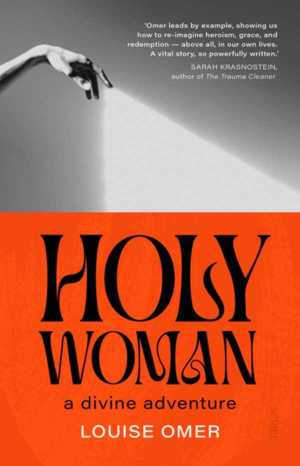
“Growing up in Ireland,” she told me over soup and soda bread, “there was an incredible religiosity. It was like everything was governed by the church. It was a really closed society. On Good Friday—there was always a sermon at three o’clock. And because there was communion, ye couldn’t eat anything for three hours before. Mam would say to us, don’t be hanging around the house. And I used to go down to the forest. Now, when I think of Good Friday, that’s what I remember: the primroses coming out. A part of my child soul knew that I could find God there. On Good Friday now, I never go to a church, but I spend the day out in nature.”
Dolores encountered a sense of the divine in the boglands, the gorse, the hills, the mist. In the threaded spine of an oak leaf, in the swooping loops of a swallow’s flight. This idea echoes through every day of my life.
Reviewer Jeremiah Rood Interviews Sophie Strand, Author of The Flowering Wand: Rewilding the Sacred Masculine
I really appreciated how you go right to the heart of a central problem in western philosophy, which trusts “what we can see and prove” and thus “we can believe.” You suggest that this leads to Descartes offering humanity two things: a mind and a dead world. Then your book does something wonderful, it takes a step beyond this argument to focus instead on that “dead world” and finds it very much alive. Where does this new awareness lead humanity?
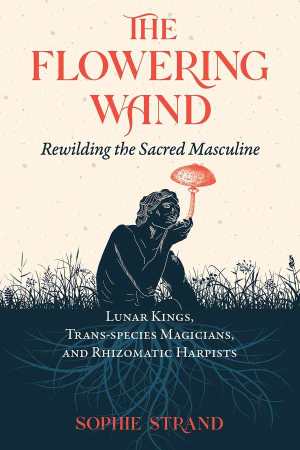
I hesitate to make any predictions about humanity’s direction. But I do think that if we are going to survive it will not be alone. It will be in symbiotic collaboration with other species and with other people. This will involve an understanding that the best thinking doesn’t happen in the atomized self. It happens in the connective tissue between different belief systems, different species, and gender expressions. If we understand that the world we inhabit is alive but alive in ways that are inherently different than our mode of consciousness, we might begin to ask questions of trees and animals and fungi that open up better futures we could never have imagined from a purely human perspective.
Matt Sutherland
